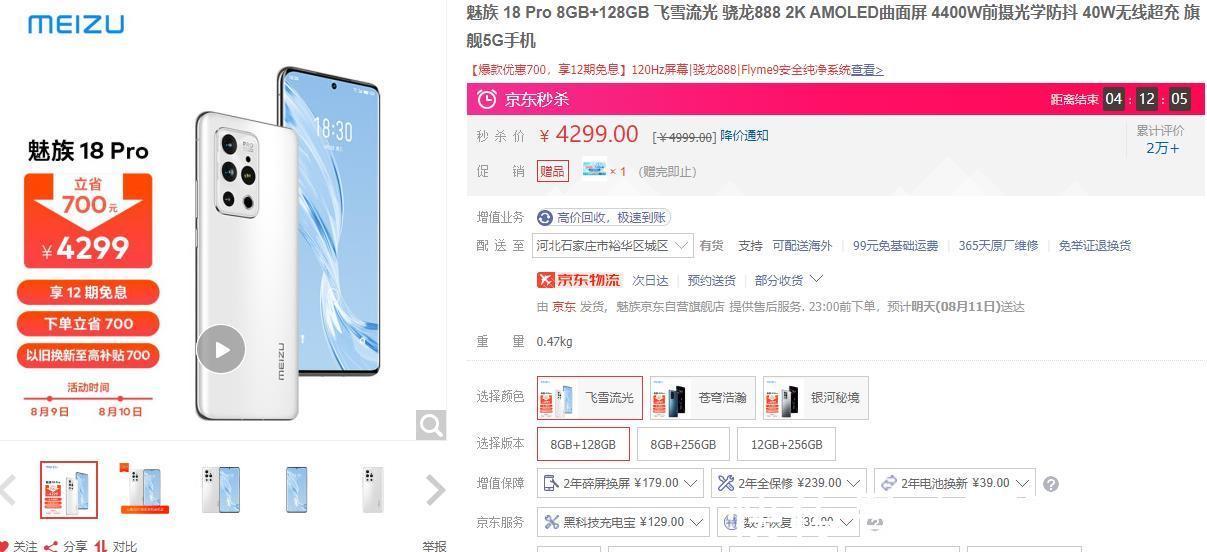springboot|springboot дёӯ inputStream зҘһз§ҳж¶ҲеӨұд№Ӣи°ң(з»Ҳз ҙ)
еәҸиЁҖ
жңҖиҝ‘е°ҸжҳҺжҺҘжүӢдәҶеүҚеҗҢдәӢзҡ„д»Јз ҒпјҢж„Ҹж–ҷд№ӢеӨ–гҖҒжғ…зҗҶд№Ӣдёӯзҡ„йҒҮеҲ°дәҶеқ‘гҖӮ
дёәдәҶйҒҝе…ҚжҺүе…ҘеҗҢдёҖдёӘеқ‘дёӨж¬ЎпјҢе°ҸжҳҺеҶіе®ҡжҠҠиҝҷдёӘеқ‘и®°дёӢжқҘпјҢ并еңЁеқ‘еүҚз«ӢдёҖдёӘеӨ§зүҢеӯҗпјҢйҒҝе…Қе…¶д»–е°ҸдјҷдјҙжҺүиҝӣеҺ»гҖӮ

ж–Үз« еӣҫзүҮ
HTTPClient жЁЎжӢҹи°ғз”Ё
дёәдәҶжҠҠиҝҷдёӘй—®йўҳиҜҙжҳҺпјҢжҲ‘们йҰ–е…Ҳд»ҺжңҖз®ҖеҚ•зҡ„ http и°ғз”ЁиҜҙиө·гҖӮ
и®ҫзҪ® body
жңҚеҠЎз«Ҝ
жңҚеҠЎз«Ҝзҡ„д»Јз ҒеҰӮдёӢпјҡ
@Controller@RequestMapping("/")public class ReqController {@PostMapping(value = "https://www.it610.com/body")@ResponseBodypublic String body(HttpServletRequest httpServletRequest) {try {String body = StreamUtil.toString(httpServletRequest.getInputStream()); System.out.println("иҜ·жұӮзҡ„ body: " + body); // д»ҺеҸӮж•°дёӯиҺ·еҸ–return body; } catch (IOException e) {e.printStackTrace(); return e.getMessage(); }}}
java е®ўжҲ·з«ҜиҰҒеҰӮдҪ•иҜ·жұӮжүҚиғҪи®©жңҚеҠЎз«ҜиҜ»еҸ–еҲ°дј йҖ’зҡ„ body е‘ўпјҹ
е®ўжҲ·з«Ҝ
иҝҷдёӘй—®йўҳдёҖе®ҡйҡҫдёҚеҲ°дҪ пјҢе®һзҺ°зҡ„ж–№ејҸжңүеҫҲеӨҡз§ҚгҖӮ
жҲ‘们д»Ҙ apache httpclient дёәдҫӢпјҡ
//postиҜ·жұӮпјҢеёҰйӣҶеҗҲеҸӮж•°public static String post(String url, String body) {try {// йҖҡиҝҮHttpPostжқҘеҸ‘йҖҒpostиҜ·жұӮHttpPost httpPost = new HttpPost(url); StringEntity stringEntity = new StringEntity(body); // йҖҡиҝҮsetEntity е°ҶжҲ‘们зҡ„entityеҜ№иұЎдј йҖ’иҝҮеҺ»httpPost.setEntity(stringEntity); return execute(httpPost); } catch (UnsupportedEncodingException e) {throw new RuntimeException(e); }}//жү§иЎҢиҜ·жұӮиҝ”еӣһе“Қеә”ж•°жҚ®private static String execute(HttpRequestBase http) {try {CloseableHttpClient client = HttpClients.createDefault(); // йҖҡиҝҮclientи°ғз”Ёexecuteж–№жі•CloseableHttpResponse Response = client.execute(http); //иҺ·еҸ–е“Қеә”ж•°жҚ®HttpEntity entity = Response.getEntity(); //е°Ҷж•°жҚ®иҪ¬жҚўжҲҗеӯ—з¬ҰдёІString str = EntityUtils.toString(entity, "UTF-8"); //е…ій—ӯResponse.close(); return str; } catch (IOException e) {throw new RuntimeException(e); }}
еҸҜд»ҘеҸ‘зҺ° httpclient е°ҒиЈ…д№ӢеҗҺиҝҳжҳҜйқһеёёж–№дҫҝзҡ„гҖӮ
жҲ‘们и®ҫзҪ® setEntity дёәеҜ№еә”е…ҘеҸӮзҡ„ StringEntity еҚіеҸҜгҖӮ
жөӢиҜ•
дёәдәҶйӘҢиҜҒжӯЈзЎ®жҖ§пјҢе°ҸжҳҺжң¬ең°е®һзҺ°дәҶдёҖдёӘйӘҢиҜҒж–№жі•гҖӮ
@Testpublic void bodyTest() {String url = "http://localhost:8080/body"; String body = buildBody(); String result = HttpClientUtils.post(url, body); Assert.assertEquals("body", result); }private String buildBody() {return "body"; }
еҫҲиҪ»жқҫпјҢе°ҸжҳҺжјҸеҮәдәҶйҫҷзҺӢзҡ„еҫ®з¬‘гҖӮ
и®ҫзҪ® parameter
жңҚеҠЎз«Ҝ
е°ҸжҳҺеҸҲзңӢеҲ°жңүдёҖдёӘжңҚеҠЎз«Ҝзҡ„д»Јз Ғе®һзҺ°еҰӮдёӢпјҡ
@PostMapping(value = "https://www.it610.com/param")@ResponseBodypublic String param(HttpServletRequest httpServletRequest) {// д»ҺеҸӮж•°дёӯиҺ·еҸ–String param = httpServletRequest.getParameter("id"); System.out.println("param: " + param); return param; }private Map buildParamMap() {Map map = new HashMap<>(); map.put("id", "123456"); return map; }
жүҖжңүзҡ„еҸӮж•°жҳҜйҖҡиҝҮ getParameter ж–№жі•иҺ·еҸ–пјҢеә”иҜҘеҰӮдҪ•е®һзҺ°е‘ўпјҹ
е®ўжҲ·з«Ҝ
иҝҷдёӘеҖ’д№ҹдёҚйҡҫпјҢе°ҸжҳҺеҝғжғігҖӮ
еӣ дёәд»ҘеүҚеҫҲеӨҡд»Јз ҒйғҪжҳҜиҝҷж ·е®һзҺ°зҡ„пјҢдәҺжҳҜ ctrl+CV жҗһе®ҡдәҶдёӢйқўзҡ„д»Јз Ғпјҡ
//postиҜ·жұӮпјҢеёҰйӣҶеҗҲеҸӮж•°public static String post(String url, Map paramMap) {ListnameValuePairs = new ArrayList<>(); for (Map.Entry entry : paramMap.entrySet()) {NameValuePair pair = new BasicNameValuePair(entry.getKey(), entry.getValue()); nameValuePairs.add(pair); }return post(url, nameValuePairs); }//postиҜ·жұӮпјҢеёҰйӣҶеҗҲеҸӮж•°private static String post(String url, List list) {try {// йҖҡиҝҮHttpPostжқҘеҸ‘йҖҒpostиҜ·жұӮHttpPost httpPost = new HttpPost(url); // жҲ‘们еҸ‘зҺ°EntityжҳҜдёҖдёӘжҺҘеҸЈпјҢжүҖд»ҘеҸӘиғҪжүҫе®һзҺ°зұ»пјҢеҸ‘зҺ°е®һзҺ°зұ»еҸҲйңҖиҰҒдёҖдёӘйӣҶеҗҲпјҢйӣҶеҗҲзҡ„жіӣеһӢжҳҜNameValuePairзұ»еһӢUrlEncodedFormEntity formEntity = new UrlEncodedFormEntity(list); // йҖҡиҝҮsetEntity е°ҶжҲ‘们зҡ„entityеҜ№иұЎдј йҖ’иҝҮеҺ»httpPost.setEntity(formEntity); return execute(httpPost); } catch (Exception exception) {throw new RuntimeException(exception); }}
еҰӮжӯӨжҳҜжңҖеёёз”Ёзҡ„ paramMapпјҢдҫҝдәҺжһ„е»әпјӣе’Ңе…·дҪ“зҡ„е®һзҺ°ж–№ејҸи„ұзҰ»пјҢд№ҹдҫҝдәҺеҗҺжңҹжӢ“еұ•гҖӮ
servlet ж ҮеҮҶ
UrlEncodedFormEntity зңӢдјје№іе№іж— еҘҮпјҢиЎЁзӨәиҝҷжҳҜдёҖдёӘ post иЎЁеҚ•иҜ·жұӮгҖӮ
йҮҢйқўиҝҳж¶үеҸҠеҲ° servlet 3.1 зҡ„дёҖдёӘж ҮеҮҶпјҢеҝ…йЎ»ж»Ўи¶ідёӢйқўзҡ„ж ҮеҮҶпјҢpost иЎЁеҚ•зҡ„ parameter йӣҶеҗҲжүҚеҸҜз”ЁгҖӮ
1. иҜ·жұӮжҳҜ http жҲ– httpsеҪ“д»ҘдёҠжқЎд»¶дёҚж»Ўи¶іж—¶пјҢPOST иЎЁеҚ•зҡ„ж•°жҚ®е№¶дёҚдјҡи®ҫзҪ®еҲ° parameter йӣҶеҗҲдёӯпјҢдҪҶдҫқ然еҸҜд»ҘйҖҡиҝҮ request еҜ№иұЎзҡ„ inputstream жқҘиҺ·еҸ–гҖӮ
2. иҜ·жұӮзҡ„ж–№жі•жҳҜ POST
3. content type дёәпјҡ application/x-www-form-urlencoded
4. servlet е·Із»ҸеңЁ request еҜ№иұЎдёҠи°ғз”ЁдәҶзӣёе…ізҡ„ getParameter ж–№жі•гҖӮ
еҪ“д»ҘдёҠжқЎд»¶ж»Ўи¶іж—¶пјҢPOST иЎЁеҚ•зҡ„ж•°жҚ®еңЁ request еҜ№иұЎзҡ„ inputstream е°ҶдёҚеҶҚеҸҜз”ЁдәҶгҖӮ
иҝҷжҳҜеҫҲйҮҚиҰҒзҡ„дёҖдёӘзәҰе®ҡпјҢеҜјиҮҙеҫҲеӨҡе°ҸдјҷдјҙжҜ”иҫғи’ҷеңҲгҖӮ
жөӢиҜ•
дәҺжҳҜпјҢе°ҸжҳҺд№ҹеҶҷеҘҪдәҶеҜ№еә”зҡ„жөӢиҜ•з”ЁдҫӢпјҡ
@Testpublic void paramTest() {String url = "http://localhost:8080/param"; Map map = buildParamMap(); String result = HttpClientUtils.post(url, map); Assert.assertEquals("123456", result); }
еҰӮжһңи°ҲжҒӢзҲұиғҪеғҸзј–зЁӢдёҖж ·пјҢйӮЈиҜҘеӨҡеҘҪгҖӮ

ж–Үз« еӣҫзүҮ
е°ҸжҳҺжғізқҖпјҢеҚҙдёҚз”ұеҫ—зңүеӨҙдёҖзҡұпјҢеҸ‘зҺ°дәӢжғ…并дёҚз®ҖеҚ•гҖӮ
и®ҫзҪ® parameter е’Ң body жңҚеҠЎз«Ҝ
жңүдёҖдёӘиҜ·жұӮзҡ„е…ҘеҸӮжҳҜжҜ”иҫғеӨ§пјҢжүҖд»Ҙж”ҫеңЁ body дёӯпјҢе…¶д»–еҸӮж•°дҫқ然ж”ҫеңЁ paramter дёӯгҖӮ
@PostMapping(value = "https://www.it610.com/paramAndBody")@ResponseBodypublic String paramAndBody(HttpServletRequest httpServletRequest) {try {// д»ҺеҸӮж•°дёӯиҺ·еҸ–String param = httpServletRequest.getParameter("id"); System.out.println("param: " + param); String body = StreamUtil.toString(httpServletRequest.getInputStream()); System.out.println("иҜ·жұӮзҡ„ body: " + body); // д»ҺеҸӮж•°дёӯиҺ·еҸ–return param+"-"+body; } catch (IOException e) {e.printStackTrace(); return e.getMessage(); }}
е…¶дёӯ StreamUtil#toString жҳҜдёҖдёӘеҜ№жөҒз®ҖеҚ•еӨ„зҗҶзҡ„е·Ҙе…·зұ»гҖӮ
/** * иҪ¬жҚўдёәеӯ—з¬ҰдёІ * @param inputStream жөҒ * @return з»“жһң * @since 1.0.0 */public static String toString(final InputStream inputStream){if (inputStream == null) {return null; }try {int length = inputStream.available(); final Reader reader = new InputStreamReader(inputStream, StandardCharsets.UTF_8); final CharArrayBuffer buffer = new CharArrayBuffer(length); final char[] tmp = new char[1024]; int l; while((l = reader.read(tmp)) != -1) {buffer.append(tmp, 0, l); }return buffer.toString(); } catch (Exception exception) {throw new RuntimeException(exception); }}
е®ўжҲ·з«Ҝ
йӮЈд№Ҳй—®йўҳжқҘдәҶпјҢеҰӮдҪ•еҗҢж—¶еңЁ HttpClient дёӯи®ҫзҪ® parameter е’Ң body е‘ўпјҹ
жңәжҷәзҡ„е°Ҹдјҷдјҙ们еҸҜд»ҘиҮӘе·ұе…Ҳе°қиҜ•дёҖдёӢгҖӮ
е°ҸжҳҺе°қиҜ•дәҶеӨҡз§Қж–№жі•пјҢеҸ‘зҺ°дёҖдёӘж®Ӣй…·зҡ„зҺ°е®һвҖ”вҖ” httpPost еҸӘиғҪи®ҫзҪ®дёҖдёӘ EntityпјҢд№ҹе°қиҜ•зңӢдәҶеҗ„з§Қеӯҗзұ»пјҢ然并LUANгҖӮ
е°ұеңЁе°ҸжҳҺжғіиҰҒж”ҫејғзҡ„ж—¶еҖҷпјҢе°ҸжҳҺеҝҪ然жғіеҲ°пјҢparamter е®Ңе…ЁеҸҜд»ҘйҖҡиҝҮжӢјжҺҘ URL зҡ„ж–№ејҸе®һзҺ°гҖӮ
д№ҹе°ұжҳҜжҲ‘们жҠҠ parameter е’Ң url 并且дёәдёҖдёӘж–°зҡ„ URLпјҢbody е’Ңд»ҘеүҚи®ҫзҪ®ж–№ејҸдёҖж ·гҖӮ
е®һзҺ°д»Јз ҒеҰӮдёӢпјҡ
//postиҜ·жұӮпјҢеёҰйӣҶеҗҲеҸӮж•°public static String post(String url, Map paramMap,String body) {try {ListnameValuePairs = new ArrayList<>(); for (Map.Entry entry : paramMap.entrySet()) {NameValuePair pair = new BasicNameValuePair(entry.getKey(), entry.getValue()); nameValuePairs.add(pair); }// жһ„е»ә url//жһ„йҖ иҜ·жұӮи·Ҝеҫ„пјҢ并添еҠ еҸӮж•°URI uri = new URIBuilder(url).addParameters(nameValuePairs).build(); //жһ„йҖ HttpClientCloseableHttpClient httpClient = HttpClients.createDefault(); // йҖҡиҝҮHttpPostжқҘеҸ‘йҖҒpostиҜ·жұӮHttpPost httpPost = new HttpPost(uri); httpPost.setEntity(new StringEntity(body)); // иҺ·еҸ–е“Қеә”// йҖҡиҝҮclientи°ғз”Ёexecuteж–№жі•CloseableHttpResponse Response = httpClient.execute(httpPost); //иҺ·еҸ–е“Қеә”ж•°жҚ®HttpEntity entity = Response.getEntity(); //е°Ҷж•°жҚ®иҪ¬жҚўжҲҗеӯ—з¬ҰдёІString str = EntityUtils.toString(entity, "UTF-8"); //е…ій—ӯResponse.close(); return str; } catch (URISyntaxException | IOException | ParseException e) {throw new RuntimeException(e); }}
иҝҷйҮҢйҖҡиҝҮ
new URIBuilder(url).addParameters(nameValuePairs).build() жһ„е»әж–°зҡ„ URLпјҢеҪ“然дҪ еҸҜд»ҘдҪҝз”Ё &key=value зҡ„ж–№ејҸиҮӘе·ұжӢјжҺҘгҖӮжөӢиҜ•д»Јз Ғ
@Testpublic void paramAndBodyTest() {String url = "http://localhost:8080/paramAndBody"; Map map = buildParamMap(); String body = buildBody(); String result = HttpClientUtils.post(url, map, body); Assert.assertEquals("123456-body", result); }
жөӢиҜ•йҖҡиҝҮпјҢйқһеёёе®ҢзҫҺгҖӮ
ж–°зҡ„еҫҒзЁӢ еҪ“然пјҢдёҖиҲ¬зҡ„ж–Үз« еҲ°иҝҷйҮҢе°ұиҜҘз»“жқҹдәҶгҖӮ
дёҚиҝҮдёҠйқўе№¶дёҚжҳҜжң¬ж–Үзҡ„йҮҚзӮ№пјҢжҲ‘们зҡ„ж•…дәӢжүҚеҲҡеҲҡејҖе§ӢгҖӮ
ж—Ҙеҝ—йңҖжұӮ
еӨ§йӣҒйЈһиҝҮпјҢеӨ©з©әдёҖе®ҡдјҡз•ҷдёӢд»–зҡ„з—•иҝ№гҖӮ
зЁӢеәҸжӣҙеә”еҰӮжӯӨгҖӮ
дёәдәҶж–№дҫҝзҡ„и·ҹиёӘй—®йўҳпјҢжҲ‘们дёҖиҲ¬йғҪжҳҜеҜ№и°ғз”Ёзҡ„е…ҘеҸӮиҝӣиЎҢж—Ҙеҝ—з•ҷз—•гҖӮ
дёәдәҶдҫҝдәҺд»Јз ҒжӢ“еұ•е’ҢеҸҜз»ҙжҠӨжҖ§пјҢе°ҸжҳҺеҪ“然йҮҮз”ЁжӢҰжҲӘеҷЁзҡ„ж–№ејҸгҖӮ
ж—Ҙеҝ—жӢҰжҲӘеҷЁ
import org.slf4j.Logger; import org.slf4j.LoggerFactory; import org.springframework.stereotype.Component; import org.springframework.util.StreamUtils; import org.springframework.web.servlet.HandlerInterceptor; import org.springframework.web.servlet.ModelAndView; import javax.servlet.http.HttpServletRequest; import javax.servlet.http.HttpServletResponse; import java.nio.charset.StandardCharsets; import java.util.Enumeration; /** * ж—Ҙеҝ—жӢҰжҲӘеҷЁ * @author иҖҒ马啸иҘҝйЈҺ * @since 1.0.0 */@Componentpublic class LogHandlerInterceptor implements HandlerInterceptor {private Logger logger = LoggerFactory.getLogger(LogHandlerInterceptor.class); @Overridepublic boolean preHandle(HttpServletRequest httpServletRequest,HttpServletResponse httpServletResponse, Object o) throws Exception {// иҺ·еҸ–еҸӮж•°дҝЎжҒҜEnumeration enumeration = httpServletRequest.getParameterNames(); while (enumeration.hasMoreElements()) {String paraName = enumeration.nextElement(); logger.info("Param name: {}, value: {}", paraName, httpServletRequest.getParameter(paraName)); }// иҺ·еҸ– body дҝЎжҒҜString body = StreamUtils.copyToString(httpServletRequest.getInputStream(), StandardCharsets.UTF_8); logger.info("body: {}", body); return true; }@Overridepublic void postHandle(HttpServletRequest httpServletRequest,HttpServletResponse httpServletResponse, Object o, ModelAndView modelAndView) throws Exception {}@Overridepublic void afterCompletion(HttpServletRequest httpServletRequest,HttpServletResponse httpServletResponse, Object o, Exception e) throws Exception {}}
йқһеёёзҡ„з®ҖеҚ•жҳ“жҮӮпјҢиҫ“еҮәе…ҘеҸӮдёӯзҡ„ parameter еҸӮж•°е’Ң body дҝЎжҒҜгҖӮ
然еҗҺжҢҮе®ҡдёҖдёӢз”ҹж•Ҳзҡ„иҢғеӣҙпјҡ
@Configurationpublic class SpringMvcConfig extends WebMvcConfigurerAdapter {@Autowiredprivate LogHandlerInterceptor logHandlerInterceptor; @Overridepublic void addInterceptors(InterceptorRegistry registry) {registry.addInterceptor(logHandlerInterceptor).addPathPatterns("/**"); super.addInterceptors(registry); }}
жүҖжңүзҡ„иҜ·жұӮйғҪдјҡз”ҹж•ҲгҖӮ
жҲ‘зҡ„ inputStream е‘ўпјҹ
е°Ҹдјҷдјҙ们и§үеҫ—еҲҡжүҚзҡ„ж—Ҙеҝ—жӢҰжҲӘеҷЁжңүжІЎжңүй—®йўҳпјҹ
еҰӮжһңжңүпјҢеҸҲеә”иҜҘжҖҺд№Ҳи§ЈеҶіе‘ўпјҹ
е°ҸжҳҺеҶҷе®ҢеҝғжғідёҖеҲҮйЎәеҲ©пјҢдёҖиҝҗиЎҢжөӢиҜ•з”ЁдҫӢпјҢж•ҙдёӘдәәйғҪиЈӮејҖдәҶгҖӮ
жүҖжңү Controller ж–№жі•дёӯзҡ„
httpServletRequest.getInputStream() зҡ„еҶ…е®№йғҪеҸҳжҲҗз©әдәҶгҖӮжҳҜи°ҒпјҹеҒ·иө°дәҶжҲ‘зҡ„ inputStreamпјҹ

ж–Үз« еӣҫзүҮ
иҪ¬еҝөдёҖжғіпјҢе°ҸжҳҺеҸ‘зҺ°дәҶй—®йўҳжүҖеңЁгҖӮ
иӮҜе®ҡжҳҜиҮӘе·ұеҲҡжүҚж–°еўһзҡ„ж—Ҙеҝ—жӢҰжҲӘеҷЁжңүй—®йўҳпјҢеӣ дёә stream дҪңдёәжөҒеҸӘиғҪиў«иҜ»еҸ–дёҖйҒҚпјҢж—Ҙеҝ—дёӯиҜ»еҸ–дёҖйҒҚд№ӢеҗҺпјҢеҗҺйқўе°ұиҜ»дёҚеҲ°дәҶгҖӮ
еҸҜжҳҜж—Ҙеҝ—дёӯеҝ…йЎ»иҰҒиҫ“еҮәпјҢйӮЈеә”иҜҘжҖҺд№ҲеҠһе‘ўпјҹ
йҒҮдәӢдёҚеҶі
йҒҮдәӢдёҚеҶіпјҢжҠҖжңҜй—® googleпјҢе…«еҚҰеҺ»еӣҙи„–гҖӮ
дәҺжҳҜе°ҸжҳҺеҺ»жҹҘдәҶдёҖдёӢпјҢи§ЈеҶіж–№жЎҲд№ҹжҜ”иҫғзӣҙжҺҘпјҢйҮҚеҶҷгҖӮ
йҮҚеҶҷ HttpServletRequestWrapper
гҖҗspringboot|springboot дёӯ inputStream зҘһз§ҳж¶ҲеӨұд№Ӣи°ң(з»Ҳз ҙ)гҖ‘йҰ–е…ҲйҮҚеҶҷ HttpServletRequestWrapperпјҢжҠҠжҜҸж¬ЎиҜ»еҸ–зҡ„жөҒдҝЎжҒҜдҝқеӯҳиө·жқҘпјҢдҫҝдәҺйҮҚеӨҚиҜ»еҸ–гҖӮ
/** * @author binbin.hou * @since 1.0.0 */public class MyHttpServletRequestWrapper extends HttpServletRequestWrapper {private byte[] requestBody = null; //з”ЁдәҺе°ҶжөҒдҝқеӯҳдёӢжқҘpublic MyHttpServletRequestWrapper(HttpServletRequest request) throws IOException {super(request); requestBody = StreamUtils.copyToByteArray(request.getInputStream()); }@Overridepublic ServletInputStream getInputStream() {final ByteArrayInputStream bais = new ByteArrayInputStream(requestBody); return new ServletInputStream() {@Overridepublic int read() {return bais.read(); // иҜ»еҸ– requestBody дёӯзҡ„ж•°жҚ®}@Overridepublic boolean isFinished() {return false; }@Overridepublic boolean isReady() {return false; }@Overridepublic void setReadListener(ReadListener readListener) {}}; }@Overridepublic BufferedReader getReader() throws IOException {return new BufferedReader(new InputStreamReader(getInputStream())); }}
е®һзҺ° Filter
жҲ‘们дёҠйқўйҮҚеҶҷзҡ„ MyHttpServletRequestWrapper д»Җд№Ҳж—¶еҖҷз”ҹж•Ҳе‘ўпјҹ
жҲ‘们еҸҜд»ҘиҮӘе·ұе®һзҺ°дёҖдёӘ FilterпјҢеҜ№еҺҹжңүзҡ„иҜ·жұӮиҝӣиЎҢжӣҝжҚўпјҡ
import org.springframework.stereotype.Component; import javax.servlet.*; import javax.servlet.http.HttpServletRequest; import java.io.IOException; /** * @author binbin.hou * @since 1.0.0 */@Componentpublic class HttpServletRequestReplacedFilter implements Filter {@Overridepublic void destroy() {}@Overridepublic void doFilter(ServletRequest request, ServletResponse response,FilterChain chain) throws IOException, ServletException {ServletRequest requestWrapper = null; // иҝӣиЎҢжӣҝжҚўif(request instanceof HttpServletRequest) {requestWrapper = new MyHttpServletRequestWrapper((HttpServletRequest) request); }if(requestWrapper == null) {chain.doFilter(request, response); } else {chain.doFilter(requestWrapper, response); }}@Overridepublic void init(FilterConfig arg0) throws ServletException {}}
然еҗҺе°ұеҸҜд»ҘеҸ‘зҺ°дёҖеҲҮйғҪеҘҪиө·жқҘдәҶпјҢе°ҸжҳҺеҳҙи§’еҸҲжјҸеҮәдәҶйҫҷзҺӢзҡ„еҫ®з¬‘гҖӮ
е°Ҹз»“ ж–ҮдёӯеҜ№еҺҹе§Ӣй—®йўҳиҝӣиЎҢдәҶз®ҖеҢ–пјҢе®һйҷ…йҒҮеҲ°иҝҷдёӘй—®йўҳзҡ„ж—¶еҖҷпјҢзӣҙжҺҘе°ұжҳҜдёҖдёӘжӢҰжҲӘеҷЁ+еҸӮж•°е’Ңbodyзҡ„иҜ·жұӮгҖӮ
жүҖд»Ҙж•ҙдёӘй—®йўҳжҺ’жҹҘиө·жқҘжңүдәӣжөӘиҙ№ж—¶й—ҙгҖӮ
дёҚиҝҮжөӘиҙ№зҡ„ж—¶й—ҙеҰӮжһңжІЎжңүд»»дҪ•еҸҚжҖқпјҢйӮЈе°ұжҳҜзңҹзҡ„жөӘиҙ№дәҶгҖӮ
жңҖж ёеҝғзҡ„дёӨзӮ№еңЁдәҺпјҡ
пјҲ1пјүеҜ№дәҺ servlet ж ҮеҮҶзҡ„зҗҶи§ЈгҖӮ
пјҲ2пјүеҜ№дәҺжөҒиҜ»еҸ–зҡ„зҗҶи§ЈпјҢд»ҘеҸҠдёҖдәӣ spring зҡ„зӣёе…ізҹҘиҜҶгҖӮ
еҲ°жӯӨиҝҷзҜҮе…ідәҺspringboot дёӯ inputStream зҘһз§ҳж¶ҲеӨұд№Ӣи°ңзҡ„ж–Үз« е°ұд»Ӣз»ҚеҲ°иҝҷдәҶ,жӣҙеӨҡзӣёе…іspringboot дёӯ inputStream еҶ…е®№иҜ·жҗңзҙўи„ҡжң¬д№Ӣ家д»ҘеүҚзҡ„ж–Үз« жҲ–继з»ӯжөҸи§ҲдёӢйқўзҡ„зӣёе…іж–Үз« еёҢжңӣеӨ§е®¶д»ҘеҗҺеӨҡеӨҡж”ҜжҢҒи„ҡжң¬д№Ӣ家пјҒ
жҺЁиҚҗйҳ…иҜ»
- зғӯй—№дёӯзҡ„еӯӨзӢ¬
- Shell-BashеҸҳйҮҸдёҺиҝҗз®—з¬Ұ
- JSдёӯзҡ„еҗ„з§Қе®Ҫй«ҳеәҰе®ҡд№үеҸҠе…¶еә”з”Ё
- 2021-02-17|2021-02-17 е°Ҹе„ҝжҢүж‘©иҶ»дёӯз©ҙ-иҲ’зј“е’іе—Ҫ
- ж·ұе…ҘзҗҶи§ЈGoд№Ӣgenerate
- ејӮең°жҒӢдёӯпјҢйҖҗжёҗйҖӮеә”дёҖдёӘдәәеҲ°еә•ж„Ҹе‘ізқҖд»Җд№ҲпјҲпјү
- ActivitiпјҲдёҖпјүSpringBoot2йӣҶжҲҗActiviti6
- жҲ‘зңјдёӯзҡ„дҪӣзі»з»ҸзәӘдәә
- гҖҠйӯ”法科й«ҳдёӯзҡ„еҠЈзӯүз”ҹгҖӢ第26еҚ·пјҲInvasionзҜҮпјүеҸ‘е”®
- вҖңжҲҗй•ҝвҖқиҜ»д№ҰзӨҫзҫӨжӢӣеӢҹ











